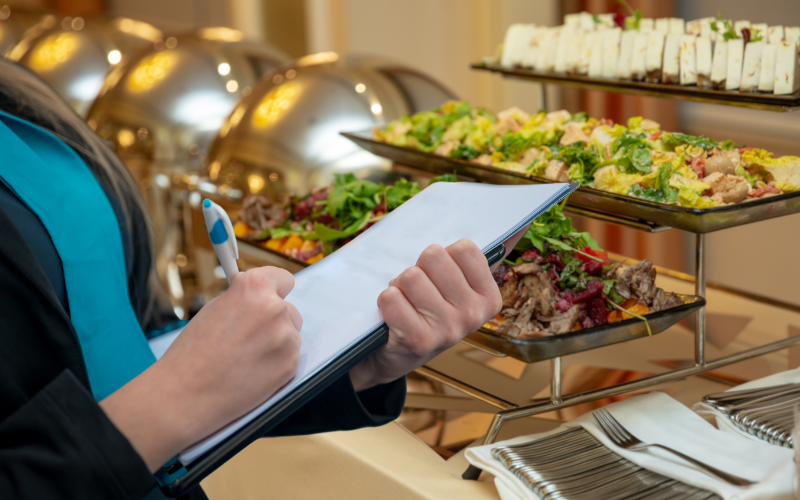By Bo Davis, CEO and Founder of MarginEdge
It is now apparent many of the survival techniques restaurant owners used to stay afloat during the pandemic have stuck, evolving their operations to a new normal. These techniques are now essential upgrades and are integral to having a profitable restaurant business, including online ordering, delivery and takeaway options, sustainable menus and innovative products such as at-home meal kits to enable customers to recreate the restaurant experience at home.

The most powerful change we’ve seen post-COVID is in how the restaurant business has embraced technology. Restaurant operators have seen there is no merit in going back to the traditional ways of managing their operations, food and labor costs and profitability. During the pandemic, many have learned they can monitor all of these very closely using technology, and are now accustomed to having the same access to data across their operations to make better decisions for their business. The old ‘back of the envelope’ way just doesn’t cut it anymore.
One of the most integral pieces of restaurant technology has been fintech, or financial technology. Fintech is rapidly changing how the restaurant industry does business by placing a keen focus on mitigating the effects of food costs and inflation, enabling restaurants to stay profitable and grow their business.
Like any other type of restaurant tech, there are many novel options for operators who might not know where to start. In 2023, we’re going to see fintech adapt from a lifeline in a crisis to a true upgrade to the way the restaurant industry operates. These are four fintech trends we’re expecting to see in 2023 for the restaurant industry.
Mobile Payments
One of the biggest trends in fintech for the restaurant industry is mobile payments. Mobile payments allow customers to pay for their meals using QR codes on their smartphones, tablets, or other mobile devices, rather than traditional methods like cash or credit cards. Many restaurants are now using mobile payment apps like Apple Pay, Google Wallet and Venmo to accept payments, and this trend is expected to continue to grow in the coming years.
Likewise, restaurant owners are now looking for ways to run their restaurants from their mobile devices. As many operators do not have (or want to spend) extra time sitting on a back office computer to get work done, operators need to be able to manage their sales data, orders, staff, payroll, banking and all the back-end operations from their mobile phones. Adopting fintech solutions can give them the freedom needed to be more efficient.
POS Integrations
Another trend in fintech gaining traction in the restaurant industry is the preference of working with point-of-sale (POS) systems that integrate with other technologies, such as inventory management systems or customer relationship management (CRM) software, rather than standalone POSs. These systems allow restaurants to track sales, manage inventory and analyze customer data in real time, which can help them make better business decisions and improve their operations.
Additionally, many of these systems are cloud-based, which means they can be accessed from anywhere (including a smartphone) and are easy to update and maintain.
Digital Wallets
Digital wallets allow customers to store their credit and debit card information in a secure, digital format, which can be used to make payments at participating restaurants. Additionally, digital wallets can also store loyalty points, coupons and other information, which can help increase customer engagement and reward loyalty.
An April 2022 survey found digital wallet adoption had decreased compared to 6 months prior; however, many cloud-based payments providers are continuing to release digital wallet offerings. This is a healthy indication if industry providers are continuing to invest in digital wallet platforms, they’re betting on user adoption to follow suit.
AI and Machine Learning
AI and machine learning have also made their way into restaurant tech stacks. AI can be used to optimize menu items, forecast demand, manage inventory and track customer preferences. Decisions once made based on seasoned gut instinct can now be supported with the help of trend data thanks to AI. In the front of house, these tools can help restaurants offer more personalized and streamlined experiences for their customers like kiosks and self-service ordering. These in turn help increase customer loyalty and revenue.
Overall, fintech is positively impacting the way restaurants do business and interact with their customers. These exciting new technologies are making it easier for customers to pay, help restaurants improve their operations and, most importantly, increase revenue.
When looking for platforms to include in their restaurant tech stacks, operators should look for solutions built by people from the industry itself, as the products are developed with an inherently better understanding of the business and how to make operations easier – not more complicated. As fintech continues to evolve and adoption increases, it’s clear these solutions will continue to shape the future of the restaurant industry.
Bo Davis is co-founder and CEO of MarginEdge, the industry-leading restaurant software platform providing automated invoice processing with food and beverage cost analytics.



